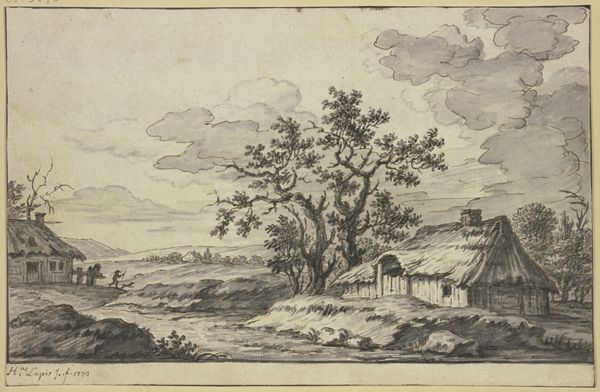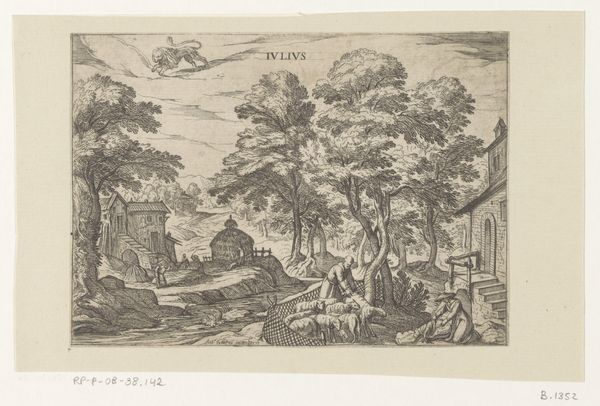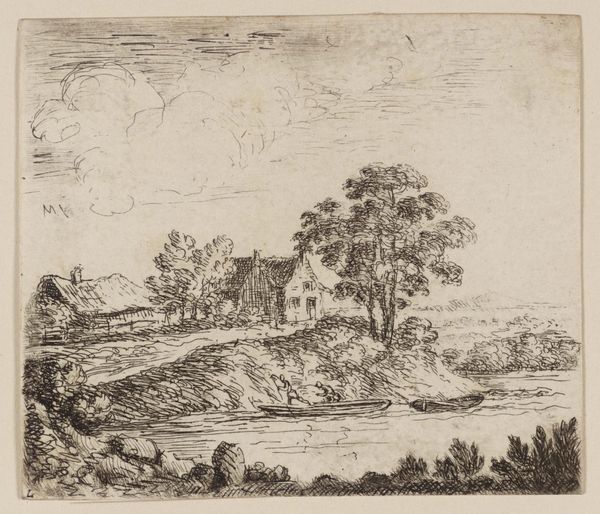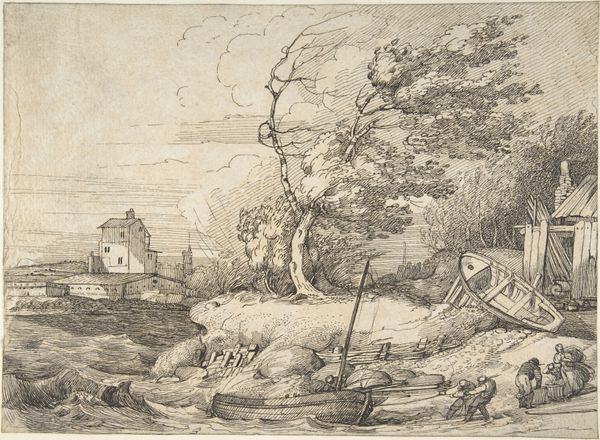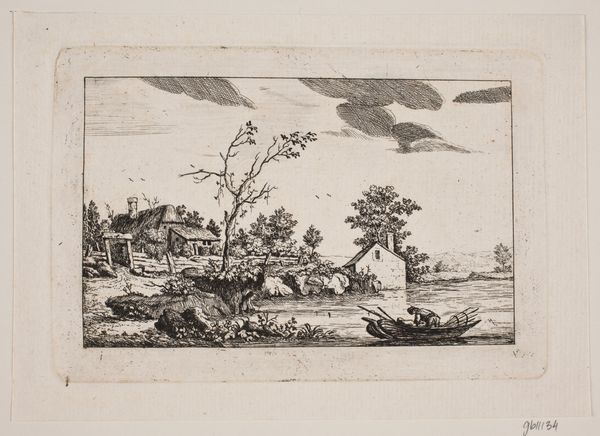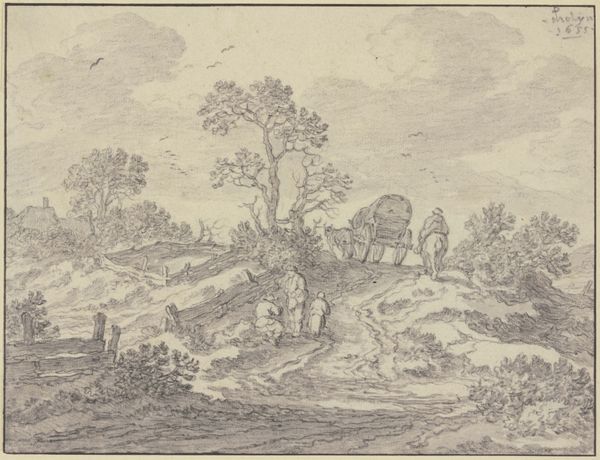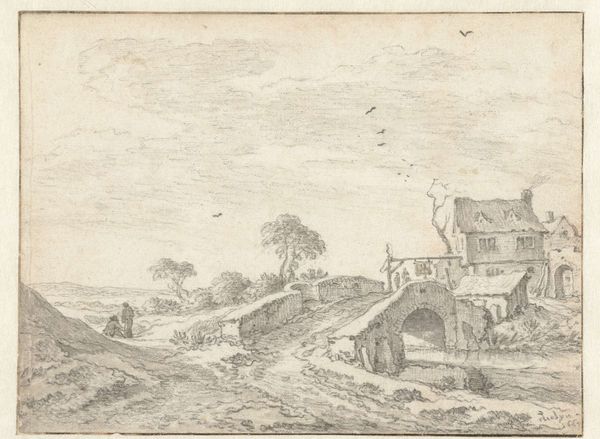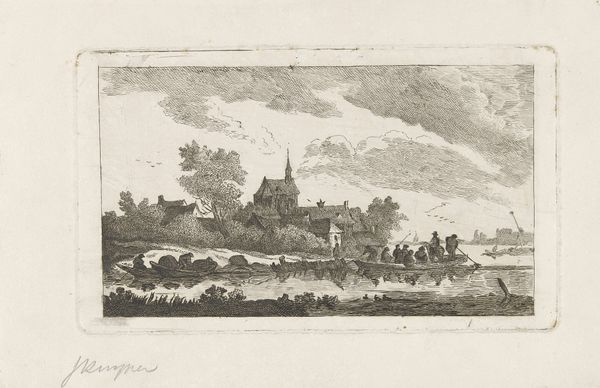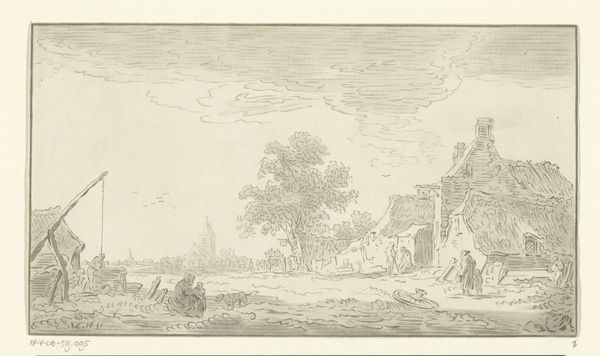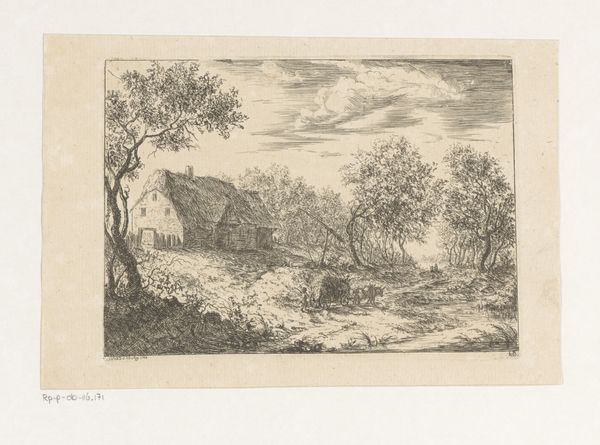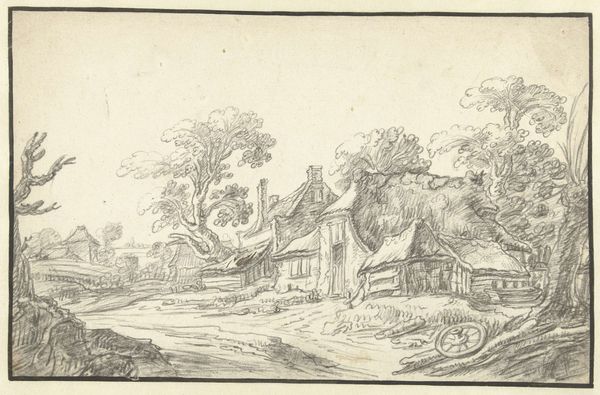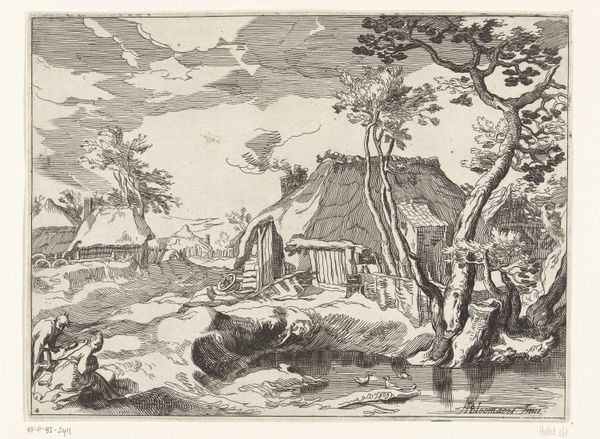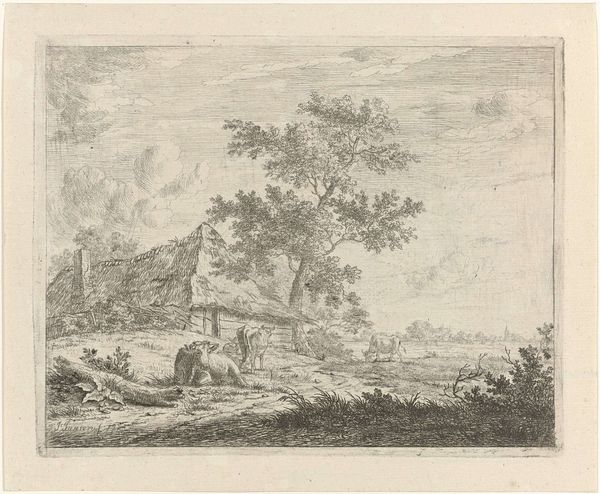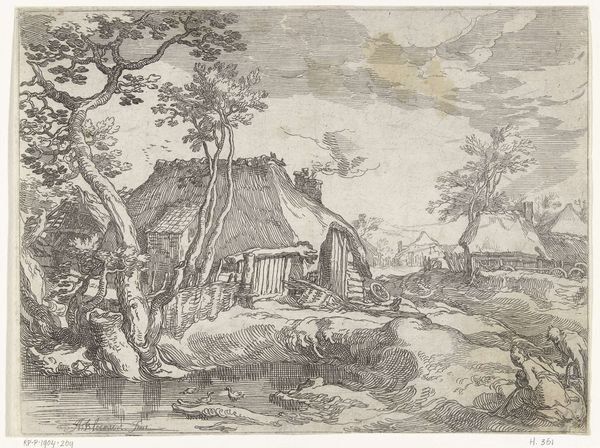
drawing, ink
#
drawing
#
landscape
#
ink
#
15_18th-century
Copyright: Public Domain
Editor: Here we have "Village on a Stream, with a Rider on the Way," a drawing in ink by Hieronymus Lapis, dated 1773. I'm immediately drawn to the contrast between the rustic, almost humble village buildings and the vastness of the landscape. What stories do you think this drawing is trying to tell? Curator: It speaks to the way people situate themselves, doesn't it? This piece highlights the historical tension between human presence and the natural world, rendered at a moment when ideas about progress and enlightenment were starting to reshape European societies. Think about the figure on horseback; how might we interpret his role within the village, but also within this sweeping depiction of nature? Editor: He seems to be passing through, perhaps connecting the village to a larger world? I imagine travel at that time was not easy. Curator: Precisely. His journey can symbolize broader themes of trade, communication, even societal change, challenging us to think critically about mobility and access in the 18th century. In a way, the drawing asks questions about who has the freedom to move and connect, and what systems enable or prevent that freedom. And also about social class... what are your thoughts about that aspect? Editor: So, the drawing is more than just a pretty landscape; it reflects the social and political dynamics of its time, which impact class divisions? That’s not what I thought at first glance! Curator: Exactly. It urges us to look beyond the surface aesthetics. Art always holds up a mirror to society, sometimes reflecting uncomfortable truths. Editor: I never would have considered those social underpinnings on my own, but now I can appreciate this pastoral scene on a much deeper level. Thanks! Curator: And now hopefully it invites you, and all listeners, to challenge and redefine dominant historical narratives in what you see in other works as well!
Comments
No comments
Be the first to comment and join the conversation on the ultimate creative platform.
